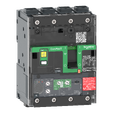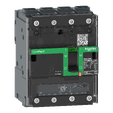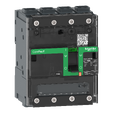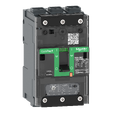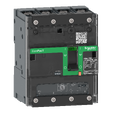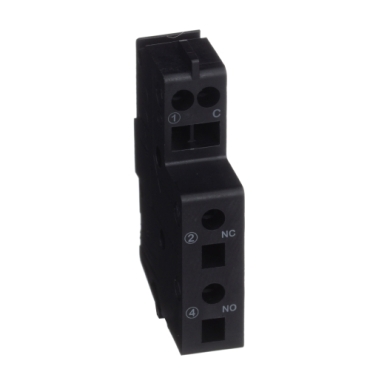
Roll over image to zoom in

1 videos
LV426950
ComPacT NSXm has smaller frame size, incorporating new features and innovations
ComPacT NSXm is the smallest frame size in the rage, offering new features and innovations
Gain up to 40% in space when using with integrated earth leakage protection
Reduce up to 40% mounting and cabling time
Select, configure and commission easily with EcoStruxure Customer Lifecycle Software
Environmental Data
Total lifecycle Carbon footprint
2
Use Better
Packaging made with recycled cardboard
Yes
Use Again
Take-back
No
It is a single standard auxiliary contact that provides two remote information of the circuit breaker status. It is used on Compact NSXm and PowerPact B devices. The OF contact (open/closed) indicates the position of the circuit breaker main contacts. The SD contact (trip indication) indicates if the circuit breaker has tripped. There is one auxiliary contact model for OF and SD information, depending on where it is fitted in the device. This auxiliary is a common point changeover type contact with 1 normally open contact and 1 normally closed contact. The rated current is 5A and the minimum load is 2mA at 17 VDC. Utilization categories are AC12/AC13/DC12/DC13/DC14. Compact NSXm embeds 2 auxiliary contacts and their presence is visible on the front face through green flags. It complies with IEC 60947-5-1 standard.
| Product or component type | Auxiliary contact |
|---|---|
| Device short name | SD OF |
| Device application | Breaker status monitoring |
| Range compatibility | PowerPact PowerPact B ComPact ComPact NSXm |
| Signal contacts composition | 1 NO/NC |
| Fault type | Overload Short-circuit |
|---|---|
| Local signalling | ON/OFF indication for open/close Trip indicator for relay trip indicator |
| Auxiliary contacts type | Standard |
| Mounting mode | Clip-on |
| [Ith] conventional free air thermal current | 5 A |
| Breaking capacity (A) | AC-12: 5 A at 24 V AC 50/60 Hz AC-12: 5 A at 48 V AC 50/60 Hz AC-12: 5 A at 110...127 V AC 50/60 Hz AC-12: 5 A at 220/240 V AC 50/60 Hz AC-12: 5 A at 380/440 V AC 50/60 Hz AC-12: 5 A at 660/690 V AC 50/60 Hz AC-15: 5 A at 24 V AC 50/60 Hz AC-15: 5 A at 48 V AC 50/60 Hz AC-15: 4 A at 110...127 V AC 50/60 Hz AC-15: 3 A at 220/240 V AC 50/60 Hz AC-15: 2.5 A at 380/440 V AC 50/60 Hz AC-15: 0.1 A at 660/690 V AC 50/60 Hz DC-12: 5 A at 24 V DC 50/60 Hz DC-12: 2.5 A at 48 V DC 50/60 Hz DC-12: 0.6 A at 110 V DC 50/60 Hz DC-12: 0.3 A at 250 V DC DC-13: 2.5 A at 24 V DC DC-13: 1.2 A at 48 V DC DC-13: 0.35 A at 110 V DC DC-13: 0.05 A at 250 V DC DC-14: 1 A at 24 V DC DC-14: 0.2 A at 48 V DC DC-14: 0.05 A at 110 V DC DC-14: 0.03 A at 250 V DC |
| Minimum load | 2 mA at 17 V DC |
| Auxiliary connection terminal | Spring |
| Wire stripping length | 8 mm for front connection |
| Unit Type of Package 1 | PCE |
|---|---|
| Number of Units in Package 1 | 1 |
| Package 1 Height | 1.200 cm |
| Package 1 Width | 7.500 cm |
| Package 1 Length | 10.500 cm |
| Package 1 Weight | 25.000 g |
| Unit Type of Package 2 | BB1 |
| Number of Units in Package 2 | 10 |
| Package 2 Height | 5.000 cm |
| Package 2 Width | 14.000 cm |
| Package 2 Length | 25.000 cm |
| Package 2 Weight | 257.000 g |
| Unit Type of Package 3 | S03 |
| Number of Units in Package 3 | 220 |
| Package 3 Height | 30.000 cm |
| Package 3 Width | 30.000 cm |
| Package 3 Length | 40.000 cm |
| Package 3 Weight | 6.300 kg |
Schneider Electric aims to achieve Net Zero status by 2050 through supply chain partnerships, lower impact materials, and circularity via our ongoing “Use Better, Use Longer, Use Again” campaign to extend product lifetimes and recyclability.
Total lifecycle Carbon footprint
2
Environmental Disclosure
Use Better
Packaging made with recycled cardboard
Yes
Packaging without single use plastic
No
Compliant
REACh Regulation
Use Again
End of life manual availability
No need of specific recycling operations
Take-back
No
WEEE Label
The product must be disposed on European Union markets following specific waste collection and never end up in rubbish bins
Items usually bought together
Need more information? Check our technical FAQs!
Easily find answers to the most frequently asked questions.


